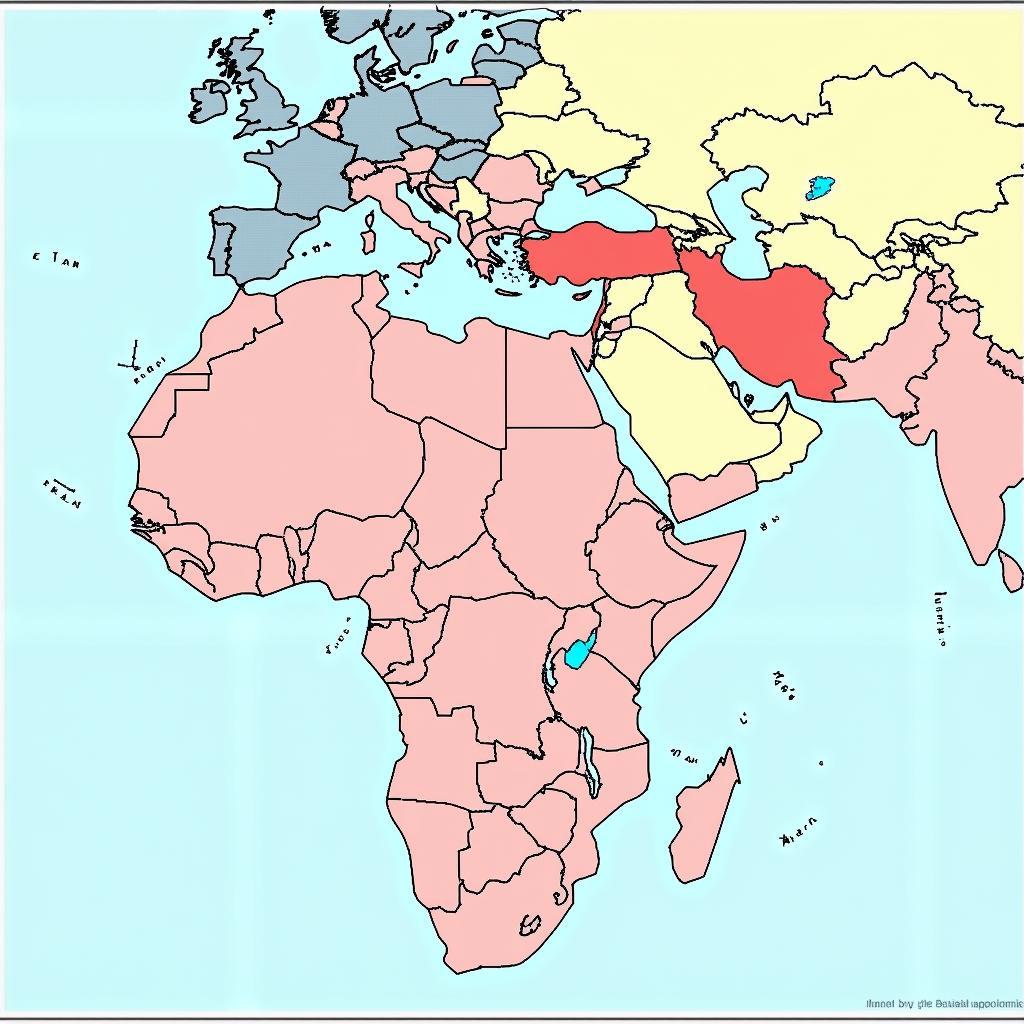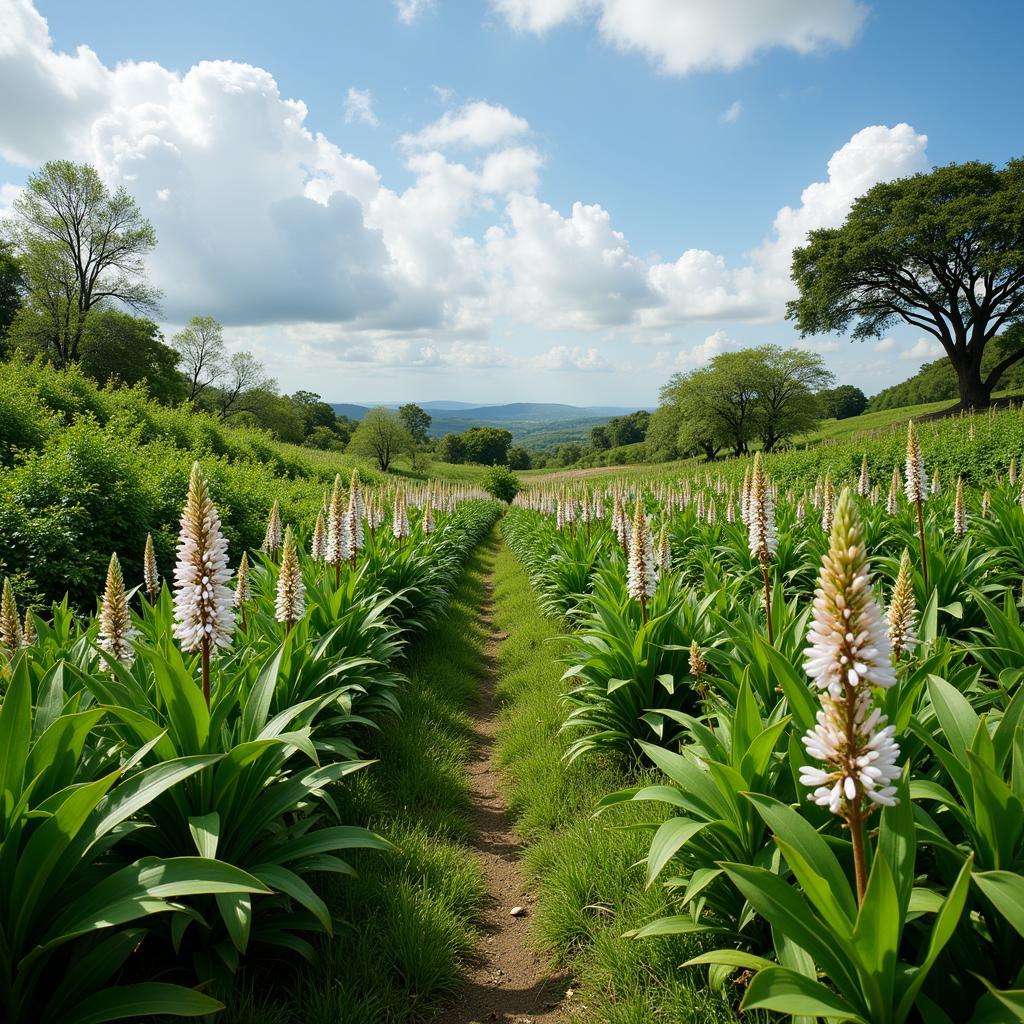Exploring the Diversity of African Fruit: A Look at Congo’s Bounty
The lush rainforests and fertile lands of the Democratic Republic of Congo are home to a captivating array of flora and fauna, including a remarkable diversity of fruits. While African Congo fruit might not be a common phrase in every household, a closer look reveals a fascinating world of flavors, textures, and cultural significance. From everyday staples to exotic delicacies, these fruits offer a glimpse into the rich biodiversity and culinary heritage of the region.
Beyond the Familiar: Unveiling Congo’s Unique Fruits
While mangoes, bananas, and pineapples are familiar sights in markets worldwide, Congo boasts a collection of fruits unique to its ecosystems. These lesser-known treasures offer a window into the country’s ecological wealth and traditional foodways.
One such example is the safou, also known as the African pear or African berry in Congo. With its vibrant purple skin and creamy, avocado-like flesh, the safou is a nutrient powerhouse, rich in healthy fats, vitamins, and minerals. Often boiled or roasted, it is a beloved ingredient in Congolese cuisine, featuring in stews, sauces, and even desserts.
Another notable fruit is the mbongo, a wild fruit with a tangy flavor reminiscent of grapefruit. Encased in a hard outer shell, the mbongo’s juicy pulp is traditionally enjoyed fresh, providing a refreshing burst of flavor on a hot day. Its versatility extends beyond its raw form; mbongo is often used to make juices, jams, and even alcoholic beverages.
Cultural Significance: Fruits as More Than Just Food
In Congo, as in many parts of Africa, fruits hold cultural significance beyond their nutritional value. They are deeply intertwined with traditions, ceremonies, and daily life. Certain fruits are seen as symbols of prosperity, fertility, and good health.
For instance, the kola nut, while not technically a fruit but rather the seed of the kola tree, holds a prominent place in Congolese culture. Its bitter flavor and caffeine content have made it a popular stimulant for centuries. Beyond its stimulating properties, the kola nut is highly valued for its ceremonial significance. It is traditionally offered as a gesture of hospitality, respect, and goodwill during important events such as weddings, funerals, and peace negotiations.
The Global Appeal of Congolese Fruits
As the world becomes increasingly interconnected, interest in exotic fruits continues to grow. The unique flavors and nutritional profiles of Congolese fruits have begun to attract attention beyond the borders of the country. The African Congo fruit for hair growth is gaining popularity for its potential health and beauty benefits. The international demand for these fruits not only offers economic opportunities but also raises awareness about the rich biodiversity and cultural heritage of the Congo Basin.
However, it is essential to ensure that the increasing demand for these fruits is met sustainably, preserving the delicate balance of the Congo’s ecosystems for generations to come.
Looking Ahead: Preserving and Promoting Congo’s Fruit Heritage
Despite the abundance and variety of fruits found in Congo, challenges remain in terms of preservation, cultivation, and market access. Deforestation, political instability, and lack of infrastructure pose significant threats to the long-term viability of these valuable resources.
Efforts are underway to promote sustainable agricultural practices, improve infrastructure, and empower local communities to manage and benefit from their fruit resources. Organizations are working with farmers to introduce improved cultivation techniques, enhance fruit processing methods, and explore new market opportunities, both domestically and internationally.
Conclusion: A Taste of Congo’s Natural Bounty
The diversity of African fruit Congo offers more than just a culinary adventure; it provides a glimpse into the rich tapestry of the country’s culture, ecology, and history. From the familiar sweetness of bananas to the exotic tang of mbongo, these fruits offer a sensory journey through the heart of Africa. As we continue to explore the world of flavors, it is essential to remember the importance of preserving these valuable resources, ensuring that future generations can savor the unique tastes of Congo’s natural heritage.
FAQs about African Fruit in Congo
1. What is the most popular fruit in Congo?
While Congo boasts a wide variety of fruits, bananas and plantains are staples in the Congolese diet, consumed in various forms throughout the day.
2. Are there any poisonous fruits in Congo?
Yes, as with any region, there are certain wild fruits in Congo that can be toxic if ingested. It’s always advisable to exercise caution and consult local knowledge before consuming any unfamiliar fruit.
3. Where can I find Congolese fruits outside of Congo?
Specialty African grocery stores in major cities worldwide are increasingly stocking exotic fruits like safou and mbongo. You can also find some of these fruits online through specialized retailers.
4. How can I contribute to the preservation of Congolese fruit diversity?
Supporting organizations working on sustainable agriculture and forest conservation in the Congo Basin is crucial. Additionally, raising awareness about the importance of these fruits and promoting responsible consumption can make a difference.
5. Can I grow Congolese fruits in my home garden?
Growing tropical fruits in other climates can be challenging, but some species, like the African eggplant, can be grown successfully with proper care and conditions.
For further exploration of African fruit diversity and related topics, we recommend visiting our related pages:
For any inquiries or assistance, please don’t hesitate to contact our 24/7 customer service:
Phone: +255768904061
Email: kaka.mag@gmail.com
Address: Mbarali DC Mawindi, Kangaga, Tanzania.

